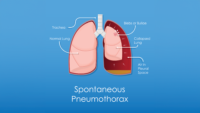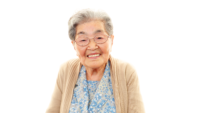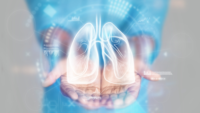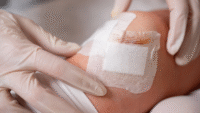This rapidly evolving outbreak deserves your full attention.
Editor’s note (3/30/20): The COVID-19 (coronavirus 2019) situation is fluid. We encourage readers to refer to the Centers for Disease Control and Prevention (CDC) website for updates.
According to the World Health Organization (WHO), human coronaviruses (CoV) are a “large family of viruses that cause illness ranging from the common cold to more severe diseases such as Middle East respiratory syndrome (MERS-CoV) and severe acute respiratory syndrome (SARS-CoV).” Coronaviruses are zoonotic, meaning they’re transmitted between animals and people. Human coronaviruses are responsible for two epidemic infections within the last 20 years. In 2003-2004, SARS-CoV was identified as the cause of a respiratory illness in China that spread globally, affecting thousands of people worldwide. In 2013-2014 MERS-CoV was responsible for a respiratory illness in the Middle East, which infected thousands of people in the region.
In December 2019, the Chinese Health Commission announced the identification of a cluster of individuals who were diagnosed with pneumonia of an unknown origin. The initial report from Wuhan, China, on December 31, 2019, suggested the cluster consisted of 27 individuals. By January 11, 2020, this number was adjusted to 41. Most of those who became ill could be linked to a seafood wet market, where seafood and gaming meats are sold. Initially, when reports of illness began to surface, it was believed the transmission of the infection was limited, with little human-to-human transmission. Since the initial report surfaced, this belief has been proven false.
On January 7, 2020, the virus was identified as a new strain of coronavirus. Initially, the CDC and WHO called the virus 2019-nCoV. On February 11, 2020, WHO announced the new official name of the disease—COVID-19.
Before December 2019, six species of coronaviruses were known. Of those, four are linked to symptoms similar to the common cold. The other two species are SARS-CoV and MERS-CoV. The genome for COVID-19 has been identified, and it is 75% to 80% similar to SARS-CoV. (Note that no new cases of SARS-CoV have been reported since 2004.) COVID-19 causes a respiratory illness, which can include bilateral pneumonia, and it has an infinity for growth in the epithelial cells of the human airway
Since COVID-19 was first identified, the disease has spread globally to 202 countries on six continents with more than 693,000 confirmed cases globally, and reports of more than 33,000 deaths worldwide. On March 12 the WHO classified the disease as a pandemic. The first case in the United States was identified on January 21, 2020, and the first 15 cases could all be linked back to China. On February 26, a woman in Northern California was identified by the CDC as the first case of community-acquired COVID-19 in the United States, meaning the origin of her disease is unknown. Community spread diseases are problematic for the healthcare community because the pathway of exposure can’t be identified and suggests the spread is ongoing. By March 30, the number of positive COVID-19 cases in the United States was more than 140,000 individuals in all 50 states and five jurisdictions. The disease has resulted in more than 2,400 deaths, with New York, New Jersey, Michigan, California, and Washington State accounting for the largest number of positive COVID-19 cases.
Symptoms
According to the CDC, individuals who have been identified with a COVID-19 infection report respiratory symptoms ranging from mild to severe. Symptoms can appear as early as 2 days after exposure up to 14 days after. This information is based on the incubation period seen in other coronaviruses, as well as the patients who have been diagnosed with COVID-19.
Symptoms include fever, cough, and shortness of breath; some individuals report myalgia/fatigue. However, fever isn’t always present, especially in the young, elderly, and individuals who are immunocompromised. The most severe complications stem from bilateral pneumonia and acute respiratory distress. Individuals who report symptoms of fever, cough, and dyspnea in combination with recent travel to areas affected by the disease or contact with an individual diagnosed with COVID-19 should seek assistance from a healthcare provider or contact their state or local health department.
Testing
COVID-19 testing in the United States has been challenging. Early and accurate testing is essential to allow healthcare professionals to differentiate COVID-19 from other diseases with similar symptoms and to prevent community spread. The United States has a shortage of testing kits and not all individuals who need to be tested have been. The CDC developed its own laboratory test kit (2019-Novel Coronavirus [2019-nCoV] Real-Time Reverse Transcriptase [RT]-PCR Diagnostic Panel), which uses specimens obtained from the patient’s upper and lower respiratory tract. In early February, the kits were distributed to qualified laboratories, but performance issues were identified and users weren’t able to verify results. As a result, the CDC was assessing and processing all specimen samples; unlike commercial laboratories, it was significantly limited in the number of tests it could complete daily. The CDC worked to rectify the issue and on Wednesday February 26, announced that it had been resolved. The new CDC test kits weren’t widely distributed and were only provided to local and state health departments. In addition, the test takes 3 to 4 days to process and obtain results. The limited number of test kits and laboratories available to test and the long processing time has hindered the U.S. testing process.
Since early March, commercial laboratories have been available to test for COVID-19. Drive-through testing sites were established in areas with wide community spread. These sites are assisting with the identification of COVID-19, but the number of individuals who can be processed at these sites isn’t meeting the demand. On March 24, a new test developed by a scientist from Rutgers University was announced. This new test, which has received FDA approval, is considered to be fast acting and can be processed within 45 minutes. It should be available for use as early as March 30.
The test kits are designed to identify COVID-19 in individuals who are symptomatic. The CDC suggests that not all individuals who are exposed to COVID-19 will develop symptoms, so it’s developing a serology test to determine how much of the U.S. population has been exposed to the disease. This test will assess for the presence of antibodies that develop after exposure or infection. Since symptoms of COVID-19 are believed to be mild in 80% of individuals, a serology test may help detect exposure in those that are asymptomatic or have mild symptoms.
Treatment and nursing care
The goal of nursing care for COVID-19 is to treat symptoms, minimize exposure of healthcare professionals, and decrease the spread of infection. Treatment includes antipyretics, fluids, and airway management, which could involve artificial airway support. Experimental drugs being investigated for the treatment of COVID-19 include remdesivir, hydroxychloroquine, and chloroquine. Currently, no empirical evidence supports their use. Clinical trials for COVID-19 vaccinations are beginning in Seattle and at the National Institutes for Health, and worldwide vaccine development has begun in more than 12 countries. In addition to symptomatic care, experimental treatment, and vaccine development, appropriate isolation measures should be taken to decrease the risk of virus transmission to other patients and healthcare professionals.
An individual who is suspected to have COVID-19 should be placed in an airborne infection isolation room using negative pressure and 12 exchanges an hour with a minimum of two outdoor exchanges per hour. Personal protective equipment (PPE)— N95 facemask, gloves, goggles, and a gown—should be used by nurses and other healthcare professionals who care for patients suspected to have or diagnosed with COVID-19. Some organizations may use a controlled air purifying respirator hood instead of an N95 mask, especially when providing care (such as suctioning and specimen collection) that can generate infectious aerosols. With the increase in patients with COVID-19, a severe shortage of PPE, especially N95 masks, exists. Some healthcare professionals are being asked to reuse N95 masks for an entire shift. This significantly hinders the ability to prevent the spread of the disease.
All healthcare professionals should use caution when performing tasks that generate infectious aerosols. When these tasks are being performed, the number of staff in the room should be limited to essential personnel to limit exposure. Surfaces within the patient’s room must be cleansed and disinfected after all procedures are performed. “An analysis of studies of coronaviruses (including SARS and MERS) found that these viruses can persist on inanimate surfaces like metal, glass, or plastic for up to 9 days, but can be efficiently inactivated by surface disinfection procedures.”
As suggested by the CDC, healthcare organizations should restrict visitors from entering the rooms of patients suspected to have or diagnosed with COVID-19. The increase in cases has resulted in many institutions adopting a no visitor policy. If a visitor is given access to an infected person, he or she must be monitored for illness. All healthcare workers who care for patients with COVID-19 also must be monitored by the hospital and public health authorities. To minimize the risk of exposure and transmission, dedicated healthcare professionals should be assigned to care for patients with COVID-19, but this is challenging as the number of patients increases. Institutions are trying to keep all patients with COVID-19 in a designated area, but many have reached their maximum capacity.
A log of all individuals who enter a patient’s room or provide care to a patient suspected to have COVID-19 should be maintained to track exposure. When possible, disposable equipment and supplies should be used to minimize spread of infection.
Hand hygiene also is essential to prevent the transmission of COVID-19. Washing with soap and water for 20 seconds or using an alcohol-based hand sanitizer is acceptable, although sanitizer is preferred unless hands are visibly soiled. Hand hygiene must be performed before and after all procedures and before entering and exiting the patient’s room. Hand hygiene also should be performed before donning and removing PPE. During the Ebola outbreak of 2014-2016, healthcare workers’ hands became contaminated when removing PPE. For this reason, many healthcare organizations have instituted more frequent hand hygiene practices when removing PPE than are suggested by the CDC. Hand hygiene should be completed after gown and glove removal, before touching eye protection, after removing eye protection, and after removing the N95 mask.
Take home message
In December 2019, a novel strain of coronavirus was identified in China. Since then, more than 693,000 people have been infected globally, resulting in over 33,000 deaths. In the United States, more than 140,000 cases have been confirmed in all states with 2,400 deaths. COVID-19 is a rapidly evolving outbreak and is community spread. The number of cases will continue to grow and nurses are at the frontline of this crisis. As a point of reference, the SARS-CoV outbreak infected 8,000 people; prevention control measures successfully halted the outbreak in 7 to 8 months. To help resolve the COVID-19 outbreak, all healthcare professionals must know how to prevent exposure and transmission. Additionally, all healthcare providers must be given the tools to maintain appropriate infection control procedures. Keep in mind that information continues to evolve, so it’s important to frequently visit CDC and WHO websites.
Denise Nash-Luckenbach is an assistant professor and a coordinator of the RN-to-BSN program at Kean University School of Nursing in Union, New Jersey.
References
Bagcchi S. Mysterious pneumonia in China. The Lancet. NewsDesk. 2020;20(2):173. thelancet.com/journals/laninf/article/PIIS1473-3099(20)30011-6/fulltext
Casanova LM, Teal LJ, Sickbert-Bennett EE, et al Assessment of self-contamination during removal of personal protective equipment for Ebola patient care. Infect Control Hosp Epidemiol. 2016;37(10):1156-61.
Centers for Disease Control and Prevention. CDC tests for COVID-19. February 25, 2020. cdc.gov/coronavirus/2019-ncov/about/testing.html
Centers for Disease Control and Prevention. Interim infection prevention and control recommendations for patients with confirmed coronavirus 2019 (COVID-19) or persons under investigation for COVID-19 in healthcare settings. February 12, 2020. cdc.gov/coronavirus/2019-nCoV/hcp/infection-control.html
Centers for Disease Control and Prevention. Locations with confirmed COVID-19 cases: Global map. March 4, 2020. cdc.gov/coronavirus/2019-ncov/locations-confirmed-cases.html
Chan JFW, Yuan S, Kok KH, Kao-Wang K, et al. A familial cluster of pneumonia associated with the 2019 novel coronavirus indicating person-to-person transmission: A study of a family cluster. Lancet. 2020;395(10223):514-23.
Hemida MG. Middle East respiratory syndrome coronavirus and the One Health concept. PeerJ. 2019;7:e7556. ncbi.nlm.nih.gov/pmc/articles/PMC6708572/
Kampf G, Todt D, Pfaender S, Steinmann E. Persistence of coronaviruses on inanimate surfaces and their inactivation with biocidal agents. J Hosp Infect. 2020;104(3):246-51. journalofhospitalinfection.com/article/S0195-6701(20)30046-3/fulltext
Perlman S. Another decade, another coronavirus. N Engl J Med. 2020;382760-2. doi.org/10.1056/NEJMe2001126
Zou P, Yang XL, Wang XG, et al. A pneumonia outbreak associated with a new coronavirus of probable bat origin. Nature. February 3, 2020. doi.org/10.1038/s41586-020-2012-7
Zhu N, Zhang D, Wang W, Li X et al. A novel coronavirus from patients with pneumonia in China 2019. N Engl J Med. 2020;382:727-33. doi.org/10.1056/NEJMoa2001017


















2 Comments.
My institution is not using N95 masks unless its an aerosolized situation OR a critically ill Covid patient. They say we don’t have enough. How do we get more N95 masks???? They actually sent out a study from 2019 that supports using a regular mask instead of N95 as being of low inherent risk to the HCP.
I would love to know how other institutions are handling this, as the preventative measures in paragraph two of treatment and nursing care are wonderful, but seem like they exist only in a utopian society.
Does the pnuemovac vaccine help with not getting pneumonia?